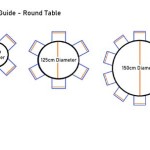Fencing In A Vegetable Garden
Protecting your vegetable garden is essential for the health of your plants. One of the most effective ways to do this is by fencing it in. Fencing can keep out animals, pests, and even bad weather, and it can help to create a microclimate that is ideal for your plants. There are many different materials and styles of fencing available, so you can choose one that is best suited to your needs and budget.
Types of Fencing
The type of fencing you choose will depend on a number of factors, including the size of your garden, the animals you are trying to keep out, and your budget. Some of the most common types of fencing include:
- Wire fencing: Wire fencing is a good option for large gardens or gardens that are prone to being damaged by animals. It is also relatively inexpensive and easy to install.
- Wood fencing: Wood fencing is a more decorative option that can add privacy to your garden. It is also more expensive than wire fencing, and it requires more maintenance.
- Chain-link fencing: Chain-link fencing is a good compromise between wire and wood fencing. It is strong and durable, but it is also relatively inexpensive.
- Vinyl fencing: Vinyl fencing is a low-maintenance option that is available in a variety of colors and styles. It is also more expensive than other types of fencing.
Installing Your Fence
Once you have chosen a type of fencing, you will need to install it. The installation process will vary depending on the type of fencing you choose, but there are some general steps that you can follow:
- Mark the perimeter of your garden. Use stakes and string to mark the perimeter of your garden. This will help you to determine the length of fencing you need.
- Dig a trench. Dig a trench along the perimeter of your garden. The trench should be about 6 inches wide and 12 inches deep.
- Set the posts. Place the posts in the trench and backfill with soil. Tamp down the soil around the posts to secure them.
- Attach the fence. Attach the fence to the posts using nails, screws, or wire. Make sure that the fence is taut and secure.
- Inspect the fence regularly. Look for any signs of damage, such as holes, tears, or rust. Repair any damage as soon as possible.
- Clean the fence. Clean the fence with a mild soap and water solution. This will help to remove dirt and debris.
- Paint or stain the fence. Paint or stain the fence every few years to protect it from the elements.
Maintaining Your Fence
Once your fence is installed, it is important to maintain it regularly. This will help to extend the life of the fence and keep it looking its best. Some of the maintenance tasks that you should perform include:
Keepin Critters Out Garden Fence Ideas Barefoot Design

Advice About Deer Fences Dear Avant Gardener

Fencing A Vegetable Garden Options And Ideas

Fencing A Vegetable Garden Options And Ideas
Keepin Critters Out Garden Fence Ideas Barefoot Design

Different Types Of Vegetable Garden Fencing North Park Wood Works

A Simple Garden Fence Tilly S Nest

Protecting Your Vegetable Garden Galvanized Fencing Dirty Fingers Muddy Knees

How Will My Garden Grow

Diy Garden Fencing








